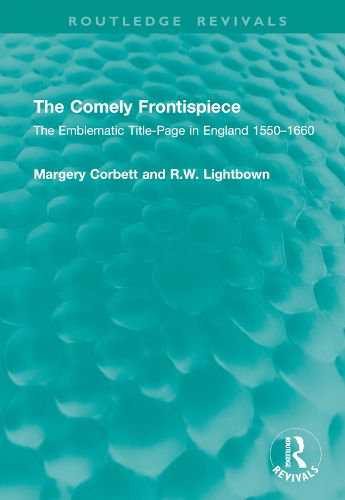Readings Newsletter
Become a Readings Member to make your shopping experience even easier.
Sign in or sign up for free!
You’re not far away from qualifying for FREE standard shipping within Australia
You’ve qualified for FREE standard shipping within Australia
The cart is loading…






Many of the major books published in the years between 1550 and 1660 - one of the richest periods in English culture - were embellished with an elaborate engraved title-page. The Comely Frontispiece (1979) selects twenty such title-pages which represent the different branches of learning - theology, philosophy, history, poetry, medicine - and explains that these pages were not mere ornaments but visual epitomes in the emblematic mode of significant aspects of the book. They were designed by the author and explore the whole world of Renaissance emblematic imagery on which they drew. We see how famous figures used the engraved title-page to express the ideas they had in mind when their books were conceived and written - ideas about the Church and society, philosophy and manners, poetry and drama, science and medicine - so that it affords us an exceptional insight into what they themselves considered was important or attractive in their own creations.
$9.00 standard shipping within Australia
FREE standard shipping within Australia for orders over $100.00
Express & International shipping calculated at checkout
Many of the major books published in the years between 1550 and 1660 - one of the richest periods in English culture - were embellished with an elaborate engraved title-page. The Comely Frontispiece (1979) selects twenty such title-pages which represent the different branches of learning - theology, philosophy, history, poetry, medicine - and explains that these pages were not mere ornaments but visual epitomes in the emblematic mode of significant aspects of the book. They were designed by the author and explore the whole world of Renaissance emblematic imagery on which they drew. We see how famous figures used the engraved title-page to express the ideas they had in mind when their books were conceived and written - ideas about the Church and society, philosophy and manners, poetry and drama, science and medicine - so that it affords us an exceptional insight into what they themselves considered was important or attractive in their own creations.